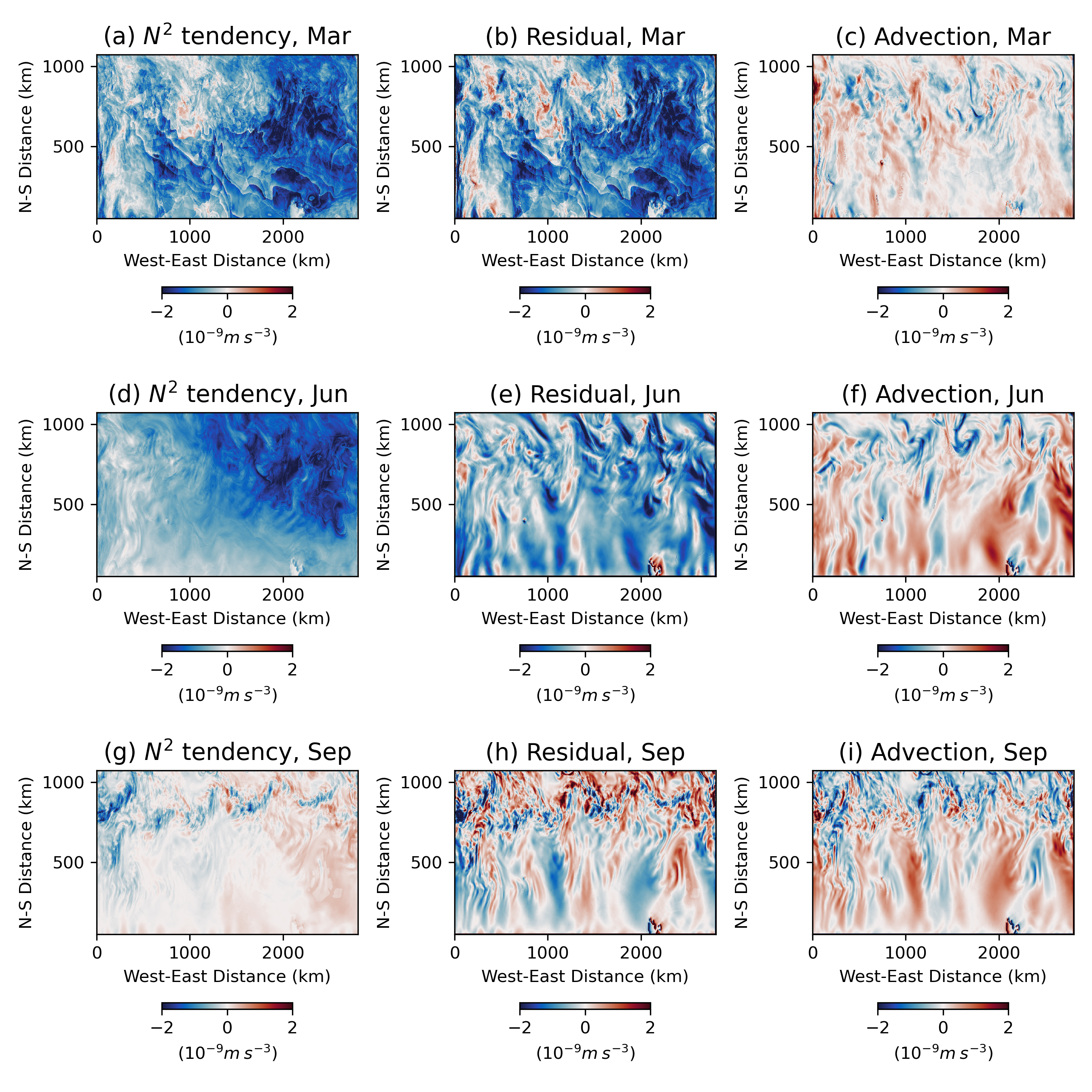The mixed-layer depth (MLD) in the ocean plays a crucial role in regulating exchanges of heat and atmospheric gases between the atmosphere and ocean. This complex interaction has significant implications for our understanding of climate systems. In our recent study, we used an idealized Regional Ocean-Atmosphere Model (ROAM) to investigate the origins of mesoscale MLD variability in the Southern Ocean and the factors that influence it.
Our analysis of the upper-ocean buoyancy budget revealed that atmospheric forcing and oceanic vertical mixing generally induce the mesoscale variability of MLD. However, the oceanic advection of buoyancy counteracts and partially balances these atmosphere-induced vertical processes. The importance of advection varies depending on the season and average MLD.
From January to May, when the mixed layer is shallow, atmospheric forcing and oceanic mixing dominate the processes, while advection plays a secondary role. In contrast, from June to December, when the mixed layer is deeper, atmospheric forcing and oceanic advection are equally important in driving MLD variability.
Notably, buoyancy advection by mesoscale ocean current anomalies can cause both local shoaling and deepening of the mixed layer. We conducted two sensitivity experiments to directly address the role of atmospheric forcing in this context. Our findings confirmed that mesoscale atmospheric forcing primarily controls MLD variability in summer, while intrinsic oceanic variability and surface forcing are equally important in winter.

As a result, when mesoscale anomalies in atmospheric fluxes are removed in winter, MLD variance increases, and oceanic advection becomes a dominant player in the buoyancy budget.
This study emphasizes the importance of oceanic advection and intrinsic ocean dynamics in driving mesoscale MLD variability. It highlights the critical role of MLD in modulating the effects of advection on upper-ocean dynamics. By deepening our understanding of the factors affecting MLD variability in the Southern Ocean, we can improve climate models and better predict future changes in our planet’s climate system.